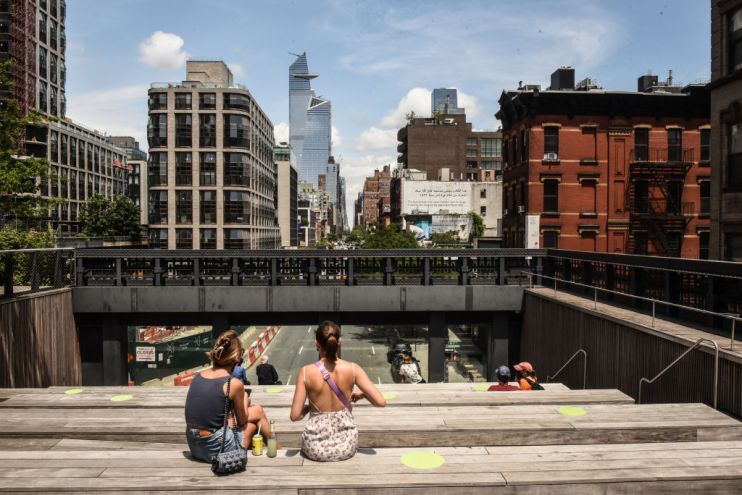A London High Line: A New York-style makeover could help the capital thrive post-Covid

The familiarity of empty streets as a result of lockdown has drawn attention to the reality that after more than a year of living with COVID, London urgently needs to be revitalised.
So the news that Camden and King’s Cross is to receive a New York City-style makeover – with a section of disused railway to be transformed into a £35million floating park – is welcome. Modelled on New York City’s High Line, it will include green spaces, seating areas, cafés and cultural spaces. Indeed, the lead landscape architect for Camden scheme, James Corner, is the man behind New York’s project.
As Corner says, “In New York… it was only after 9/11 that they invested in projects like the High Line. In some ways this is a very similar project, a very positive feel-good investment to help London come out of all the negative vibes.”
New York’s High Line has provided a vital urban regeneration stimulus, with adjoining communities seeing their local economies revitalised. It had an instant impact on the neglected West Side of Lower Manhattan: just two years after it opened in 2009, it had seen a $2 billion injection of private investment surrounding the park and 12,000 jobs created.
Today, it draws eight million visitors a year and the previously gritty Meatpacking and Chelsea districts are now home to trendy restaurants, former factories transformed into the Gansevoort and Chelsea Food Markets, and the Hudson Yards shopping mall, performance space and hotel. Part of the area has been dubbed “Architects Row” with big-name “starchitects” like Frank Gehry and Zaha Hadid attracted by the High Line to design striking buildings that complement the surroundings.
Indeed, Robert Hammond, one of its founders said shortly after it opened: “We talked about a High Line district and that it would be good for the local economy [but] we had no idea that it would happen this fast. If you had said then that 10th Avenue would be a location for some of the world’s best chefs, it would just be ludicrous.”
Covid has also made many Londoners appreciate outdoor space. A report by the London Assembly Housing Committee found that proximity of parks were important factors for Londoners when thinking about their living situation as a result of the pandemic.
As Shirley Rodriguez, London’s deputy mayor for environment and energy has said: “We already knew the numerous benefits that green spaces provide to physical and mental health, but lockdown showed us how they could be a lifeline: they are places to walk, run or exercise, to find spots of tranquillity in the middle of the day, and reunite with friends after too long apart.”
Post-COVID, people need vibrant places for socialising and for community activities. London has historically been a city of parks and squares, which has always made it one of the most pleasant cities in which to live and work.
But the NYC-style design of high lines can bring this into the 21st century with the introduction of modern spaces which offer a unique, place to meet and offer a new way to see the city, with high lines providing a contrast between busy streets below and a green sanctuary above.
One similar project on a lesser scale already exists in London: Parkland Walk, a nature reserve created in 1984 on a former railway line from Finsbury Park to Highgate. But Camden’s lead in terms of a more ambitious project should point the way for more schemes of this kind. The Peckham Coal Line, an unused set of sidings, is one option worth exploring, for example.
The last word goes to Camden’s lead architect Corner: “When cities start to stagnate, they can go downhill really fast. This project is something that is catalysing and revitalising, keeping Camden alive as a place. If you have the opportunity to live in a city that’s got great parks and gardens and high lines and canals and things that bring people out of a weekend, it’s just cool – it’s something you want to be part of. You need the magic that makes people say ‘I want to live in London’.”
Even before Covid, several cities had already followed New York’s lead; the 606 development in Chicago and the Luchtsingel in Rotterdam being two examples. Others, such as Philadelphia’s Rail Park, are in development. It’s high time London thinks more about high lines too.